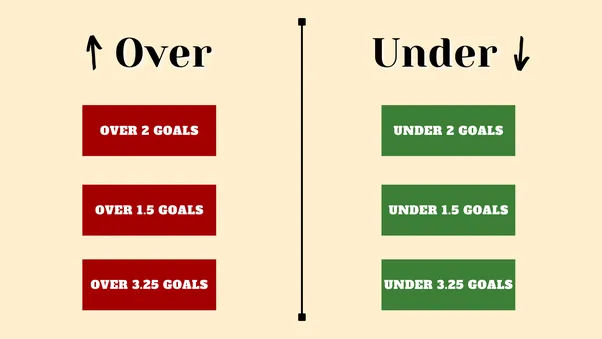Cross odds, also known as implied odds, are an important aspect of betting that many people overlook. When calculating the odds of a bet, cross odds take into account not only the probability of the event occurring, but also the potential payout and the likelihood of future bets being made.
In other words, cross odds consider the long-term impact of a bet rather than just the short-term outcome. This makes them a valuable tool for bettors looking to maximize their profits and minimize their risks. In this article, we will dive into the world of cross odds, how to calculate them, and why they are crucial for successful betting.

1. Understanding Cross Odds
Before we delve into the calculation process, let’s first understand what exactly cross odds are and how they differ from traditional odds. When we talk about traditional odds, we are referring to the probability of an event occurring based on past data or statistical analysis. For example, if a football team has won 60% of their games in the last season, their odds of winning the next game would be 60%.
However, cross odds take into consideration additional factors such as the potential payout and the likelihood of future bets. This means that even if the probability of an event occurring is low, the cross odds may still be favorable if the potential payout is high enough.
For instance, let’s say a horse has a 10% chance of winning a race according to traditional odds. However, if the potential payout for that horse is high and there is a strong possibility of future bets being made, the cross odds may still favor that horse.
2. The Importance of Calculating Cross Odds
Now that we have a basic understanding of cross odds, let’s explore why it is crucial to calculate them when placing bets. As mentioned earlier, cross odds take into account the long-term impact of a bet rather than just the short-term outcome. This means that even if a bet seems risky based on traditional odds, it may still be a wise choice when considering cross odds.
Additionally, calculating cross odds can help bettors make informed decisions and avoid making impulsive bets. By looking at the potential payout and the likelihood of future bets being made, bettors can assess the value of a bet and make an objective decision based on data rather than emotions.
Moreover, understanding cross odds can also help bettors manage their bankroll more effectively. By considering the potential payout and the likelihood of future bets, bettors can determine how much to stake on a particular bet to maximize their profits and minimize their risks.
3. How to Calculate Cross Odds
Now that we have established the importance of calculating cross odds, let’s dive into the calculation process. There are two main methods for calculating cross odds: the ratio method and the percentage method. Let’s take a closer look at each method and how they differ from one another.
Ratio Method
The ratio method involves comparing the potential payout to the probability of an event occurring. To calculate cross odds using this method, you can use the following formula:
Cross Odds = Potential Payout / Probability of Event Occurring
For example, let’s say a baseball team has a 30% chance of winning a game according to traditional odds. The potential payout for betting on that team is $150. Using the ratio method, we can calculate the cross odds as follows:
Cross Odds = $150 / 30% = $500
This means that for every $1 staked on the team, the potential return is $5, making it a favorable bet according to cross odds.
Percentage Method
The percentage method, also known as the implied probability method, involves converting the odds given by a bookmaker into a percentage and then comparing it to the actual probability of the event occurring. To calculate cross odds using this method, you can use the following formula:
Cross Odds = (1 / Odds) * 100
For instance, let’s say a horse has odds of 6/1 to win a race. Converting these odds into a percentage, we get 14% (1 / 6 * 100). However, according to traditional odds, the horse has a 10% chance of winning the race. Using the percentage method, we can calculate the cross odds as follows:
Cross Odds = (1 / 6 * 100) – 10% = 4%
This means that according to cross odds, the horse has a higher chance of winning the race than initially estimated based on traditional odds.
4. Factors That Affect Cross Odds
While the calculation methods for cross odds remain the same, there are certain factors that can affect their value. It is essential to consider these factors when calculating cross odds to get a more accurate estimate of the potential payout and likelihood of future bets being made.
Payout Structure
The payout structure refers to the way winnings are distributed among bettors. In some cases, the payout structure may favor certain bets over others, making them more appealing even if the probability of an event occurring is low. For example, in a horse race, the top three horses may receive a payout, making it more attractive to bet on those horses rather than others with higher odds but no guarantee of a payout.
Market Movements
Market movements, also known as line movements, refer to changes in the odds offered by bookmakers. These changes can occur due to various reasons, such as injuries, weather conditions, or changes in betting patterns. It is crucial to track market movements when calculating cross odds as they can provide valuable insights into how other bettors are assessing the value of a particular bet.
Future Bets
As mentioned earlier, cross odds take into consideration the likelihood of future bets being made. This means that if a bet is expected to generate a high volume of future bets, it can impact its cross odds. For example, if a popular team is playing and is expected to have a significant number of future bets placed on them, their cross odds may be more favorable even if their traditional odds are not as high.
5. Strategies for Calculating Cross Odds
Now that we have covered the basics of cross odds, let’s explore some strategies that can help you calculate them more accurately.
Historical Data Analysis
One of the most effective ways to calculate cross odds is by analyzing historical data. By looking at past trends and outcomes, you can get a better understanding of how certain factors can impact the probability of an event occurring and the potential payout. This method is particularly useful for sports betting, where there is a wealth of data available for analysis.
Emphasizing on Value Bets
Value bets refer to bets where the potential payout outweighs the probability of an event occurring. By focusing on value bets, you can increase your chances of making a profit in the long run. However, it is crucial to consider cross odds when identifying value bets as they can provide a more accurate estimate of the potential return.
Consistent Bankroll Management
Consistent bankroll management is crucial for successful betting. By managing your bankroll effectively, you can minimize your risks and maximize your profits. When calculating cross odds, it is essential to keep your bankroll in mind and stake an amount that allows you to make consistent bets without going over your budget.
6. Advantages and Disadvantages of Cross Odds

Like any other betting strategy, cross odds have their advantages and disadvantages. Let’s take a closer look at these to understand whether they are worth considering in your betting strategy.
Advantages
- Takes into consideration the long-term impact of a bet rather than just the short-term outcome
- Helps bettors make informed decisions and avoid impulsive bets
- Allows for effective bankroll management
- Useful in identifying value bets
Disadvantages
- Can be affected by external factors such as market movements and future bets
- Requires a thorough understanding of traditional odds and probability calculations
- Can be time-consuming to calculate accurately
In conclusion, cross odds are an essential aspect of betting that can help bettors make more informed decisions and manage their bankroll effectively. By taking into account not only the probability of an event occurring but also the potential payout and likelihood of future bets, cross odds provide a more accurate estimate of the value of a bet. So the next time you are placing a bet, don’t forget to consider cross odds to increase your chances of success.
1. Introduction to Cross Odds
Cross odds are a popular concept in the world of betting that allow bettors to evaluate the true value of a bet by taking into account both the probability of an event occurring and the potential payout. Unlike traditional odds, which only consider the likelihood of an event happening, cross odds provide a more comprehensive view of the betting landscape. By understanding how to calculate and analyze cross odds, bettors can make more informed decisions and increase their chances of success.
Understanding Cross Odds
Cross odds can be thought of as a way to bridge the gap between the probability of an event happening and the potential return on investment. While traditional odds provide bettors with a simple representation of the likelihood of an outcome, cross odds take it a step further by incorporating the expected payout into the equation. This allows bettors to assess whether a particular bet offers good value based on both the probability of success and the potential reward.
Importance of Cross Odds
Calculating cross odds is essential for bettors looking to make smart and strategic bets. By considering not only the probability of an event occurring but also the potential payout, bettors can identify value bets that offer a favorable risk-reward ratio. Additionally, cross odds can help bettors manage their bankroll effectively by staking an amount that corresponds to the estimated value of the bet. Overall, understanding cross odds is crucial for maximizing profits and minimizing risks in the betting world.
2. How to Calculate Cross Odds
Calculating cross odds involves converting traditional odds into a percentage format and then adjusting them based on the expected value of the bet. There are two main methods for calculating cross odds: the probability method and the percentage method. Let’s delve into each method in detail to understand how cross odds are derived.
Probability Method
The probability method involves converting traditional odds into a probability percentage and then adjusting this percentage based on factors such as market movements and future bets. Here’s how you can calculate cross odds using the probability method:
Cross Odds = Traditional Odds – Adjusted Probability
For example, if a basketball team has traditional odds of 2/1 to win a game, which translates to a 33.33% probability (1 / 3 * 100), but you believe they have a higher chance of winning due to recent player performances, you can adjust the probability accordingly to derive the cross odds.
Percentage Method
The percentage method, also known as the implied probability method, involves converting the odds given by a bookmaker into a percentage and then comparing it to the actual probability of the event occurring. To calculate cross odds using this method, you can use the following formula:
Cross Odds = (1 / Odds) * 100
For instance, let’s say a horse has odds of 6/1 to win a race. Converting these odds into a percentage, we get 14% (1 / 6 * 100). However, according to traditional odds, the horse has a 10% chance of winning the race. Using the percentage method, we can calculate the cross odds as follows:
Cross Odds = (1 / 6 * 100) – 10% = 4%
This means that according to cross odds, the horse has a higher chance of winning the race than initially estimated based on traditional odds.
Comparing Methods
Both the probability method and the percentage method are valid ways to calculate cross odds. The probability method focuses on adjusting the actual probability of an event occurring, while the percentage method emphasizes converting odds into a percentage format. Depending on your preference and the available information, you can choose the method that best suits your analytical approach when calculating cross odds.
3. Factors Influencing Cross Odds

When determining cross odds, various factors come into play that can impact the value of a bet. It is crucial to consider these factors to ensure that the calculated cross odds accurately reflect the potential outcome of a betting event. Let’s explore some of the key factors that influence cross odds calculations.
Payout Structure
The payout structure refers to how winnings are distributed among bettors in a particular betting market. This factor can significantly influence cross odds, as bets with a more favorable payout structure may have higher cross odds even if the traditional odds are not as attractive. For example, in a poker tournament where the top three players receive prizes, a participant may have higher cross odds if they are likely to finish within the prize pool.
Market Movements
Market movements, also known as line movements, occur when bookmakers adjust the odds of an event based on incoming bets or external factors such as player injuries or weather conditions. Monitoring market movements is essential when calculating cross odds, as sudden changes in odds can signal shifts in the perceived probability of an outcome. By staying abreast of market movements, bettors can adjust their cross odds calculations accordingly to make more accurate predictions.
Future Bets
The likelihood of future bets being placed on a particular outcome can impact cross odds calculations. If a bet is expected to attract a significant amount of future wagers, its cross odds may be adjusted to reflect this increased interest. For example, in horse racing, a horse with a large fan following and high media coverage may have better cross odds due to the anticipated volume of bets placed on it. Considering the potential influence of future bets is vital for estimating accurate cross odds.
Historical Data
Analyzing historical data can provide valuable insights into factors that affect the outcome of a betting event, thereby influencing cross odds calculations. By studying past trends and results, bettors can identify patterns that may impact the probability of an event occurring and the expected payout. Historical data analysis is particularly useful in sports betting, where performance statistics and head-to-head matchups can offer predictive indicators for future outcomes.
Probabilistic Models
Utilizing probabilistic models can enhance the accuracy of cross odds calculations by incorporating mathematical algorithms to predict the likelihood of an event. These models consider multiple variables, such as team performance, player statistics, and environmental factors, to generate probabilistic forecasts. By leveraging probabilistic models, bettors can refine their cross odds calculations and make more informed betting decisions based on data-driven predictions.
Conclusion
In conclusion, cross odds serve as a valuable tool for bettors seeking to optimize their betting strategies and maximize their profits. By accounting for both the probability of an event occurring and the potential payout, cross odds offer a more comprehensive assessment of the value of a bet compared to traditional odds. Understanding how to calculate cross odds using methods such as the probability method and the percentage method empowers bettors to make well-informed decisions and mitigate risks effectively. Additionally, considering factors like payout structure, market movements, future bets, historical data, and probabilistic models can enhance the accuracy of cross odds calculations and improve the overall success rate of betting endeavors. By incorporating cross odds into your betting analysis, you can elevate your strategic approach and increase your chances of achieving positive returns in the dynamic world of sports betting and gambling.



